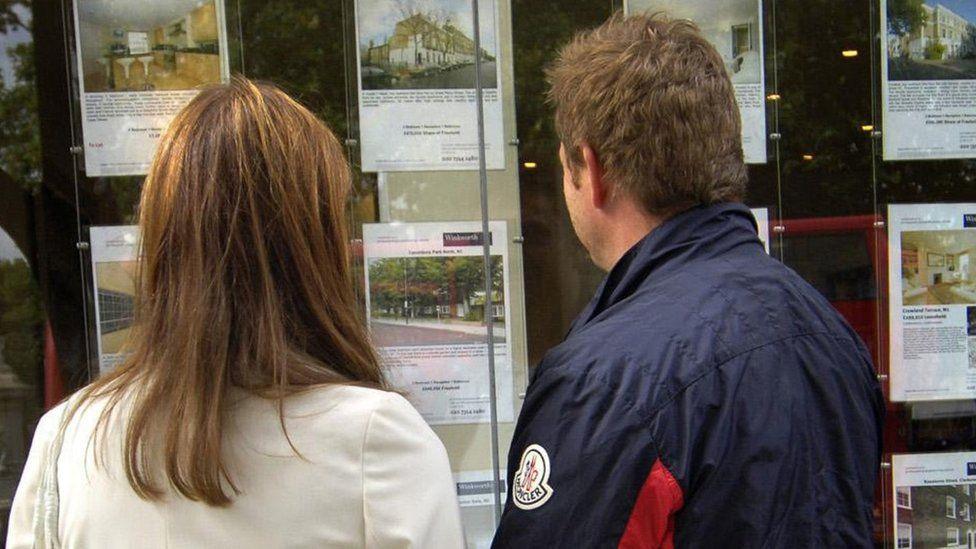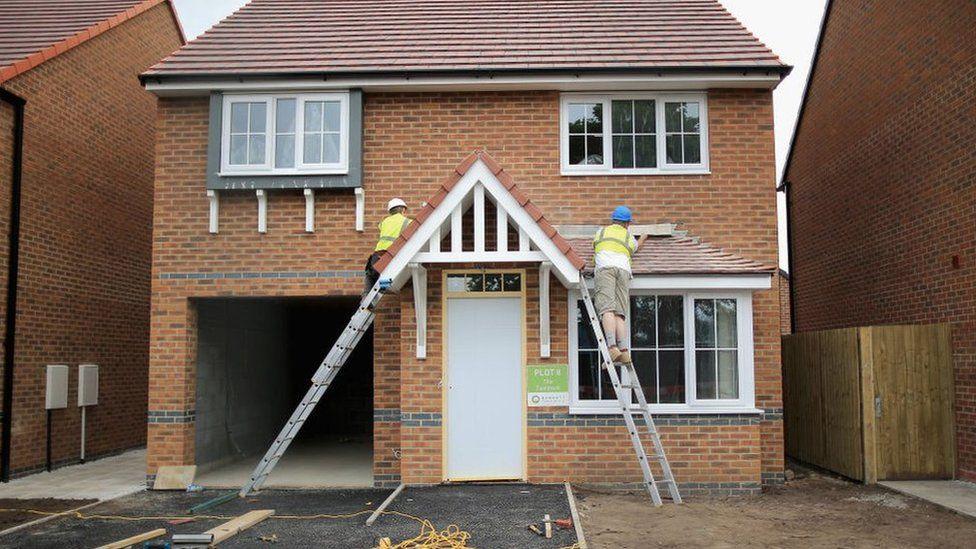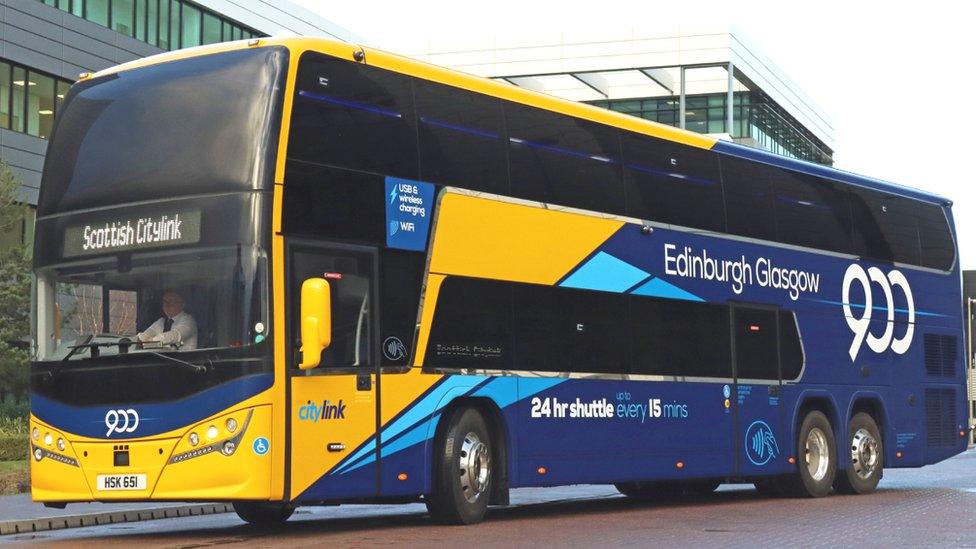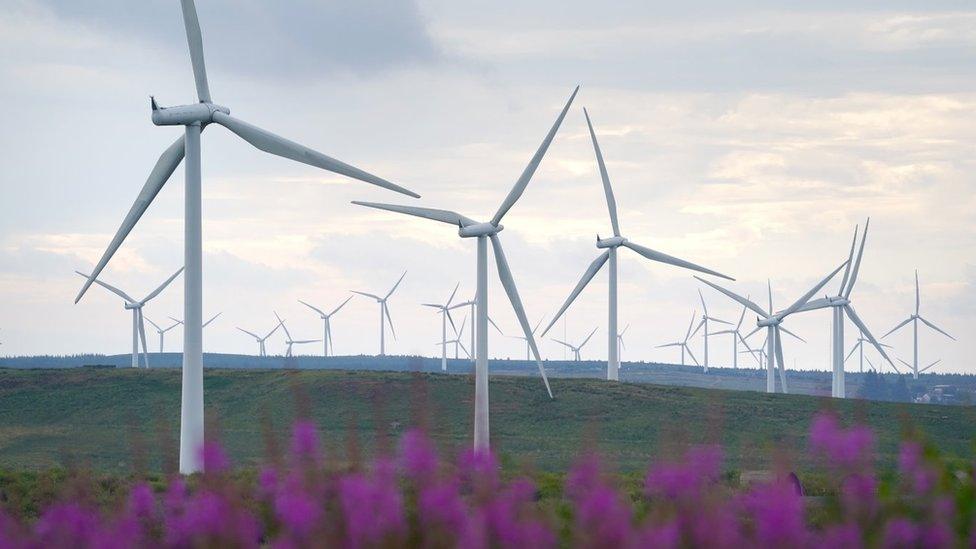What is behind Scottish home price inflation?
- Published

Scottish home price inflation is ahead of any region of England, and taking starter properties out of the reach of many who wish to get on the property ladder.
The lack of supply is part of the reason, but also the post-lockdown desire to get more space, and out of the city.
The cost of buying a home in Scotland has risen by an average of £18,000 in the year to October, or 11.3%.
That's according to the monthly figures issued by the Office for National Statistics (ONS).
That draws on property transaction details filed with Registers of Scotland, which buyers are obliged to do within weeks, and it represents an easing of the inflation rate that was seen in the preceding months. Although it's usually a quiet month for transactions, August saw a 16% increase on the previous year.
If you go back to that previous year, the market was distorted by pent-up demand from the months when viewing homes was banned, and it was near impossible to buy or sell them. In October last year, 13,000 homes were sold. October 2021 was down to 9,600.
Property is just one of the prices on the rise. The basket of consumer goods that are combined to give us the UK consumer price index was 5.1% more expensive in November this year than the year before.
The reasons are various, but most come down to the word "disruption" - of markets, of supply chains, labour shortages and power play in the global energy markets.

The price of new-build homes have been rising in price at a faster rate than the average
The latest rumblings between Russia and its European customers for gas have this week seen a further spike in wholesale prices, to reach new record levels, which will feed through to the capped price when it is next allowed to rise in April.
The ONS does not publish a breakdown of different inflation rates for the nations and regions of the UK. But the National Institute of Economic and Social Research does give that a try, with its monthly tracker. Stripping out the biggest and smallest changes, to remove distortions, it reckons that Scotland has the same inflation rate as the UK as a whole, with London significantly higher.
There are expectations that the inflation rate will continue to rise until a peak in April, when the energy price cap is raised. That's the same month National Insurance Contributions go up, hitting payroll deductions. And council tax is likely to rise, with the brakes removed by the Scottish government.
But property has continued to surge ahead of other costs. Average UK prices are 41% higher than they were only six years ago. The problem, agrees everyone in the industry, is the strong level of demand but weak level of supply.
Simple economics tells you what's going to happen next, or you can try buying a home yourself, and you'll probably find out quite quickly.
New-build surge
Having started with lots of statistics, let's assume you don't mind reading some more, indicating how the property market has been functioning, or failing to:
The most recent figures show price inflation on detached homes has been nearly double the rate for flats - 15.9% to 8.1%. This appears to reflect one trend in the market towards getting more space, and getting out of cities. People working from home now have the option of moving further from their employers' work bases.
The price of the average semi-detached house sale was up 12.1% in the year, terraced homes were up 10.6%, to an average £152,000.
The average detached home was selling for £325,000 in October, and the average flat for £126,000 (you may have noticed that I'm doing some rounding of numbers).
The average first-time buyer was paying £145,000 for that starter home, up by 9.9%, or an average £13,000. Those who had previously owned homes saw a sharper 12.6% increase, to an average £220,000.
New-build homes have been rising in price at a faster rate, up 28% to £274,000, while existing properties were up to £176,000. That might be partly explained by the vigour with which housebuilders were trying to restart the market immediately after the first lockdown, by offering attractive prices.
And Scotland's property market is seeing stronger price inflation than any of England's regions. The UK rate was up by 10.2%, falling slightly between September and October. Although it has by far the most expensive properties, with the average just above £500,000, London's rate of increase is the most subdued. Wales saw prices rise in the year to October by 15.5%.
Metropolis
One other piece of economic research, just published by the Bank of England, tries to isolate the impact of the lockdown effect - people wanting to move home to get more space, or to get out of the city. Viewed from the City of London, getting out of the city means getting out of London.
They compare price inflation for flats with houses of similar size, and compare the price inflation in London with outside the metropolis. What they conclude is that this effect accounts for nearly half the surge in prices that we've seen.
The rest? That lack of supply remains part of the story. Plus, perhaps, a rush to get onto the first rung of the property ladder before it is lifted out of reach. And making use of the surge in savings squirrelled away while we haven't had so much to spend on travel or hospitality over the past 20 months.
Those savings, earning next to nothing in savings accounts, are now losing spending power at a rate of 5.1% - so that's another incentive to find something to invest them in, and in Britain, property remains a popular choice.
Related topics
- Published14 December 2021

- Published22 November 2021

